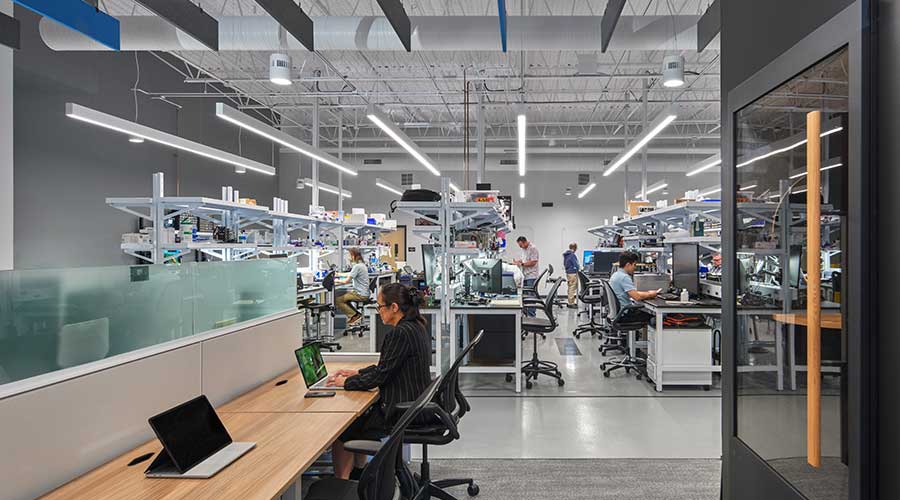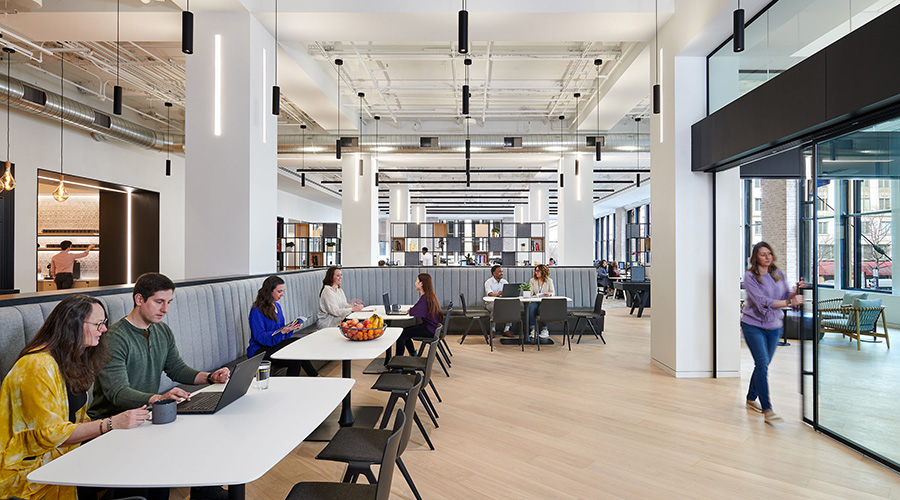Issues of Airflow, Alarms, Siting in Modernizing Labs
Part 2 of a 4-part article on key issues in ensuring that renovated BSL3s meet current standards
Other potential aids in properly modernizing a high containment lab include using visual indicators of directional airflow, alarming out-of-spec conditions, and issues of laboratory siting. Here’s a look at each.
VISUAL INDICATORS OF DIRECTIONAL AIRFLOW
Local, often wall-mounted devices that are meant to give the lab users an immediate, real-time reference about the directional airflow in the space they occupy or are about to occupy are very valuable when upgrading a facility. There are mechanical indicators (also called "ping-pong balls"); gauge indicators (swept needles on a +/- pressure range); and digital display indicators (that can include all manner of room information). Wondering which are the best? The following illustrates a few pros and cons for each indicator that will help determine which is the best for a planned renovation:
Mechanical indicators. These devices are long proven and have remained the industry standard for many years. Their reporting is independent of any other lab control device or programming and therefore they offer a true "third party" indication. As a mechanical device, however, they can fail. They also do not offer any quantifiable indication of the level of pressurization.
Gauge indicators. These devices are a clear upgrade from the pure mechanical option. Their reporting is independent of other lab control devices or programming, yet they have the ability to report data to the BAS. Their dial ranges can be suited to the application so that a positive or negative indication can be easily read from a distance.
Display indicators. These devices offer all the information of the gauges, but can complement the pressure indication with audible and/or visual alarming, which is important, especially in a gowned or masked situation. They allow for the option to keep reporting independent of other lab control devices or programming, or sync it to the building automation/lab control system so that all reported data comes from a common source. Their ranges are infinite, and with some the graphics are semi-customizable and color-keyed to the current operational condition.
ALARMING OUT-OF-SPEC CONDITIONS
Out-of-spec conditions need to be clearly alarmed so users are aware of conditions that will affect occupant safety or breach containment. As a vast amount of the researcher’s work occurs at the bench or biosafety cabinet and requires visual focus, there’s no expectation that researchers will check local indicators on a regular basis. Facility managers need to implement an unmistakable audio and visual warning indicating that action is required to maintain containment. The standard operating procedure (SOP) will dictate the reaction to these alarms, who receives them, and how. Should an alarm go off in an individual room because of a breach of containment, a choice will have to be made about whether the room or the entire suite should be evacuated. During setup and commissioning, there are often nuances of air balancing that can allow for an entire suite to operate well when all spaces are running, but that exhibit containment issues when one or more parts of that suite are unoccupied.
LABORATORY SITING
Many design guidelines suggest clearly that BSL3 and higher containment facilities be considered as facilities physically separate from other support programs and occupancies. This is often a challenge, especially at the BSL3 level, as the laboratory need is often part of a larger project at the time of construction. Highly negative pressure spaces such as BSL3s should generally be considered for interior locations where building exterior walls are not impacted. For many reasons (e.g., moisture infiltration, energy performance), buildings are generally positively pressurized toward the outdoors. Placement of a high containment facility along the building exterior can offer architectural opportunities for natural lighting and improved user experiences, but can also lead to unforeseen environmental control issues and security problems. In a perimeter location, a BSL3 can easily draw humid outdoor air into the building, causing set point control issues or even condensation on cooler indoor surfaces.
Related Topics:















